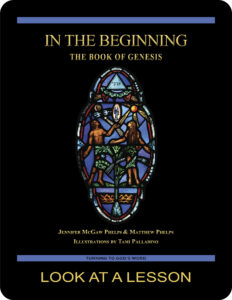circumcision
 The Acts of the Apostles 7:51 (NABRE) contains the end of the speech in which Stephen, one of the first deacons of the Church, accuses the Jews of being uncircumcised in heart and ears. Circumcision is the sign by which a man is marked as a participant in the Old Covenant. It involves cutting of the foreskin.
The Acts of the Apostles 7:51 (NABRE) contains the end of the speech in which Stephen, one of the first deacons of the Church, accuses the Jews of being uncircumcised in heart and ears. Circumcision is the sign by which a man is marked as a participant in the Old Covenant. It involves cutting of the foreskin.
The English word circumcision comes from the Latin roots circum, meaning “around” and caedo, meaning “I cut.” Circumcision, then, literally means “cutting around.” The Greek word ἐπιτομή (epitome) likewise comes from roots meaning a “cutting on” or “incision.” The Hebrew origin is also from a word meaning “cut.” Circumcision in the biblical languages, then, is named for the cutting.
When Stephen talks about being circumcised in heart and ears, what is his message? Christians have not adopted the practice of cutting their ears or their hearts, so it seems that the word has shifted in meaning. Circumcision ultimately marked people as belonging to God. What do you think it looks like to circumcise our hearts and ears?
related topics: baptism; born from above
you also may like our study of the book of Genesis
 The first seven lessons of In the Beginning: The Book of Genesis, a 28-lesson Catholic Bible study with an imprimatur, provide an in-depth look at the very earliest biblical history—including the two accounts of Creation, events surrounding the Fall of Adam and Eve, the relationship between Cain and Abel, and the baptismal foreshadowing present in the account of Noah and the Flood. Remaining lessons look at lives of the patriarchs Abraham, Isaac, Jacob, and Joseph. Click on the book’s cover to view a sample lesson.
The first seven lessons of In the Beginning: The Book of Genesis, a 28-lesson Catholic Bible study with an imprimatur, provide an in-depth look at the very earliest biblical history—including the two accounts of Creation, events surrounding the Fall of Adam and Eve, the relationship between Cain and Abel, and the baptismal foreshadowing present in the account of Noah and the Flood. Remaining lessons look at lives of the patriarchs Abraham, Isaac, Jacob, and Joseph. Click on the book’s cover to view a sample lesson.
 Click on the picture of the statue of Moses with horns (above) to learn more about Lost in Translation. A new entry is archived each Monday. Contact us to receive Lost in Translation by email every week. You may use any of the contact links on our website to ask Matthew a question.
Click on the picture of the statue of Moses with horns (above) to learn more about Lost in Translation. A new entry is archived each Monday. Contact us to receive Lost in Translation by email every week. You may use any of the contact links on our website to ask Matthew a question.
